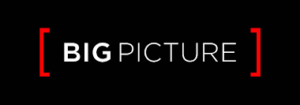1) All my research papers involve the same fundamental process: I collect information, organize my ideas, and write. To accomplish this I start my research on any subject with Syracuse Library “Summons”…my favorite…It’s one of the few bookmarks on my computer. It puts an initial “Search articles, books and other resources” at the tip of your fingers.
If it’s a topic that I’m not particularly familiar with I will then start with tertiary sources since they are the most general. Tertiary sources are encyclopedias, atlases, or other reference books (not Wikipedia 😊). These sources can give me basic background information, help me with keywords for additional research, and direct me to further sources. Since this information is very broad, tertiary sources are my starting point.
In my search engine, I typically start with filters, (if I’m not planning to be on campus)- full text online, peer reviewed (it’s my science background – we love peer reviewed), and then publication dates (usually within the last 5 years but I can be flexible depending on the topic). I may play with subject terms and area of study.
I may then move into an advanced search. If this leads me to results that I don’t want, then I can “exclude” certain results from a further search.
Interestingly, I sometimes put my search into “google” or “bing”. I can come up with results that were not initially in my Syracuse University search. Here’s a pro tip… put those results into Summons and you can have access to the information (which many times you are unable to – just with an internet search engine).
Another pro tip…our Syracuse University tuition pays for librarians and they’ll even “Live Chat” or email you back. I was frustrated late one weekend and they came to my rescue (and at a late time). I even see a text number although I haven’t tried that yet.
2) As far as my research, I am intrigued by the concept of hiring individuals with disabilities and at what point should the disability be disclosed. Will this disclosure cause stigmatized populations to be discriminated against (even if it’s never obvious to the individual)? I think disclosing of disabilities to a potential employer is a really important topic in organizational culture so I’m going to explain this foundational idea of pre-employment disclosure and the effect on hiring of individuals with disabilities.
We know from the articles we’ve read and the expanding the canon research our classmates have done that the employment participation of people with disabilities is still lags when compared to their non-disabled, and comparably educated, counterparts.
A main reason for the underemployment of individuals with disabilities is that employers often hold negative views about the work-related abilities of these individuals. What I’m interested in researching is an analysis of where in the employment relationship these negative views appear, and whether a disabled individual should disclose pre-employment of a disability. I’m referring to so-called invisible disabilities. Those struggling with invisible disabilities should be comfortable sharing information about their disability with their employer as well as requesting accommodation. Unfortunately, that is not always the situation. The question of whether or not to inform employers as well as when to inform them is an interesting question.
The issue of invisible disabilities is becoming more common in the workplace. Invisible disabilities (as described by the Invisible Disabilities Association) indicates symptoms such as “debilitating pain, fatigue, dizziness, cognitive dysfunctions, brain injuries, learning differences and mental health disorders, as well as hearing and vision impairments.” Sometimes employees are undecided about disclosing their invisible disability to their employer or coworkers. In addition to not disclosing this during an interview, this lack of transparency means that accommodations for disabilities may not be requested or made. Accommodations made in the workplace for invisible disabilities can include flexible schedule, special software for assisting with scheduling or prioritizing tasks, or architectural changes such as a standing desk.
I plan to have my research include both primary and secondary resources. This may be a challenging topic to find research on but it is one that is of personal interest to me. I hope to find the viewpoints of both the employee and the employer. I hypothesize finding employers that will truthfully answer questions (particularly about pre-employment prejudice) might be a challenge. I will try to speak with agencies that help disabled people find employment.


